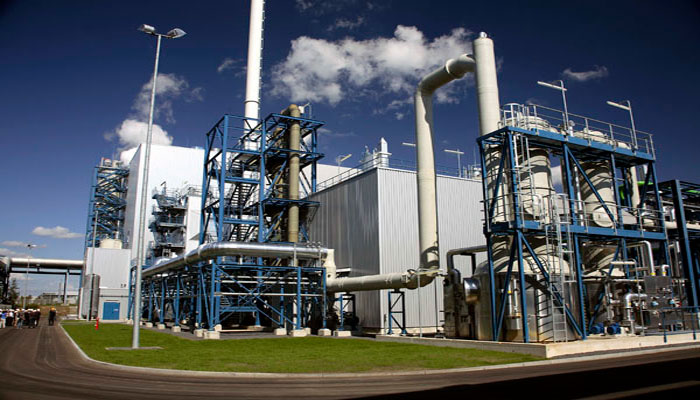Gas or power dilemma
LAHORE: Facilitations announced in haste on pressure from businessmen haunt the rulers in the long run as is evident from the long-term subsidy on gas announced for exporting industries, which the state cannot afford now.
When the concession on power and gas tariff was negotiated between the government and the exporters, there was an acute shortage of gas in the country, which is still there. At the same time the power supply was surplus, and it still is.
The government promised to supply imported gas to the exporters at a subsidised rate of $6.5/mmcfd. At that time, the subsidy at global international rates was in tolerable limits (Rs28 billion per year was deemed sufficient for the yearly subsidy).
Gas rates continued increasing and in the current budget, the subsidy amount was increased to Rs68 billion. Now the gas prices have skyrocketed, and the state must bear three to four times more subsidy, which it cannot afford.
This was the reason that the advisor on commerce warned last week at an interactive session at Lahore Chamber of Commerce and Industry that supply of gas at current subsidy would not be possible. Media reports indicate that the government now intends to withdraw subsidies on gas and ask the exporters to use the grid power that is in excess supply.
This is a sensible decision and should have been taken three years back. In fact, this proposition was discussed with the exporters who opposed it.
Their plea was that the power supply is inconsistent and frequent outrages damage their computerised machines. It is worth noting that earlier when the gas was denied to these industries, they pleaded for supply of uninterrupted power and scheduled load shedding.
By and large most of them did not face frequent outages. The exporters managed outrage free supply at a cost.
Sudden outrage is disruption of supply for a few seconds only. Surges of this type do damage the equipment. Outrages do occur in power supplies around the world, but the frequency is negligible.
It is the same in Pakistan. We see nominal outrages in domestic supplies. Outrages in industries are however engineered. The concerned industry must pay rent to the power staff to ensure that they do not engineer outrage in their industry.
Had the economic managers probed this issue, they could have resolved it through administrative measures.
The executive engineer and the SDO should be held responsible for frequent outrages which should be in line with outrages in other regions under their command.
The government should have checked the data of outrages in previous years that would have revealed the numbers were almost zero in some industries (that probably paid the rent) and frequency was higher in others (that did not oblige the staff).
The state should assure exporters that there would be no outrage if they shifted to the grid. And the situation for industries should be monitored by a person with the status of the minister of state.
The subsidy on electricity would not cost the government much as it has already announced a lower tariff for higher use of power in winter. If there are no outrages, and the supply remains consistent, computerised machines would operate smoothly.
The state would save a lot of additional foreign exchange it has to spend on importing LNG for exporting industries. Moreover, the problem of capacity payments (given to IPPs without producing power) would be reduced and ultimately end.
However, gas subsidy would hurt the exchequer in many ways. The captive power plants operated by the industries are highly inefficient and result in 50 percent wastage of imported and highly subsidised gas.
The devaluation of the rupee has further increased the cost of imported gas. There are some functions in textile chains where gas use is essential.
The state after careful study should arrange gas supply for these functions at subsidised rates, but much higher rates than current subsidised tariff. It is in the national interest that a country should utilise 100 percent capacity of its power sector.
It would reduce the circular debt and expose many IPPs that are getting capacity payments without maintaining their equipment.
The textile sector is in growth mode and the entrepreneurs cannot risk defaulting. They would adjust to a new reality with or without gas.
This government reaped the benefit of withdrawal of zero-rating on textiles with a surge in exports that was contrary to the threats of the exporters that exports would decline.
The same threat would be hurled in case of shift from gas to grid power, but the industry would adjust if the state remained adamant.
-
 How Your Body 'suffers' In Back Pain And Simple Way To Fix It
How Your Body 'suffers' In Back Pain And Simple Way To Fix It -
 What Victoria Beckham Really Did At Brooklyn, Nicola’s Wedding Revealed
What Victoria Beckham Really Did At Brooklyn, Nicola’s Wedding Revealed -
 Send Your Name To Moon With Nasa’s Artemis Mission: Here’s How
Send Your Name To Moon With Nasa’s Artemis Mission: Here’s How -
 Zhipu AI, MiniMax Debuts Mask Structural Hurdles For China’s Tech Giants
Zhipu AI, MiniMax Debuts Mask Structural Hurdles For China’s Tech Giants -
 ‘Stargate Community’: Inside OpenAI’s Plan To Cut AI Data Center Energy Costs
‘Stargate Community’: Inside OpenAI’s Plan To Cut AI Data Center Energy Costs -
 Could Brooklyn Beckham Drop His Surname Following Family Feud?
Could Brooklyn Beckham Drop His Surname Following Family Feud? -
 Rachel McAdams Becomes Object Of Jokes At Hollywood Star Of Fame Event
Rachel McAdams Becomes Object Of Jokes At Hollywood Star Of Fame Event -
 South Korea's Ex-PM Han Duck-soo Jailed For 23 Years Over Martial Law Crises
South Korea's Ex-PM Han Duck-soo Jailed For 23 Years Over Martial Law Crises -
 Global Markets On Edge Over Greenland Dispute: Is US Economic Leadership At Risk?
Global Markets On Edge Over Greenland Dispute: Is US Economic Leadership At Risk? -
 King, Queen Visit Deadly Train Crash Site
King, Queen Visit Deadly Train Crash Site -
 Oxford Research Warns ChatGPT Reflects Western Worldviews
Oxford Research Warns ChatGPT Reflects Western Worldviews -
 UK Inflation Unexpectedly Rises To 3.4% In December, The First Increase In Five Months
UK Inflation Unexpectedly Rises To 3.4% In December, The First Increase In Five Months -
 Meghan Markle Set To Take Big Decision On Returning To UK For Invictus Games
Meghan Markle Set To Take Big Decision On Returning To UK For Invictus Games -
 Prince Harry To Leave Britain One Day Earlier Than Expected For THIS Reason
Prince Harry To Leave Britain One Day Earlier Than Expected For THIS Reason -
 The Way You Consume Sugar Could Be Affecting Your Health
The Way You Consume Sugar Could Be Affecting Your Health -
 Brooklyn Beckham Gets Backing From Vanessa Marcil Amid Feud With Parents
Brooklyn Beckham Gets Backing From Vanessa Marcil Amid Feud With Parents




